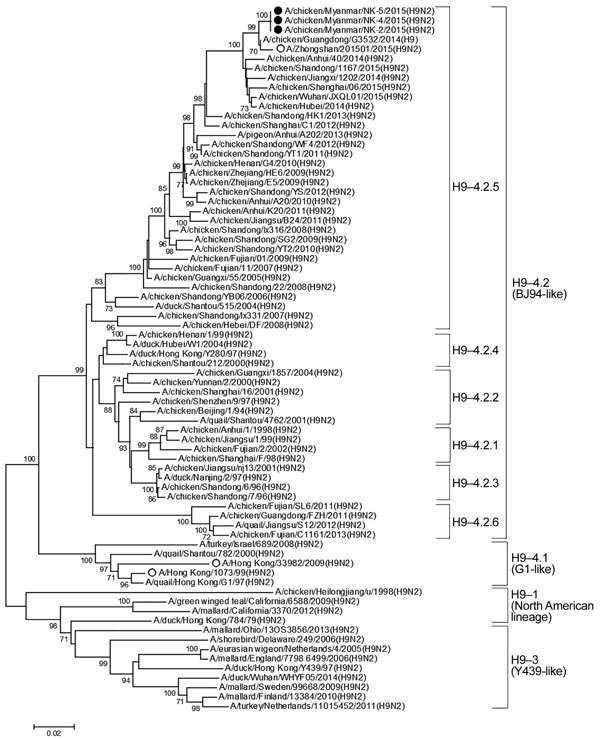Volume 23, Number 6—June 2017
Research Letter
Influenza A(H9N2) Virus, Myanmar, 2014–2015
Figure

Figure. Phylogenetic tree of H9 gene of influenza A(H9N2) viruses from Myanmar and reference viruses. Phylogenetic trees were constructed by using MEGA version 6.0 (http://www.megasoftware.net/) and a neighbor-joining algorithm with the Kimura 2-parameter model and 1,000 replications of bootstrap analysis. Only bootstrap numbers >70% are shown. Black circles represent isolates from this study, and open circles represent human H9N2 isolates. Virus clades are indicated at right. Scale bar indicates nucleotide substitutions per site.
Page created: May 16, 2017
Page updated: May 16, 2017
Page reviewed: May 16, 2017
The conclusions, findings, and opinions expressed by authors contributing to this journal do not necessarily reflect the official position of the U.S. Department of Health and Human Services, the Public Health Service, the Centers for Disease Control and Prevention, or the authors' affiliated institutions. Use of trade names is for identification only and does not imply endorsement by any of the groups named above.